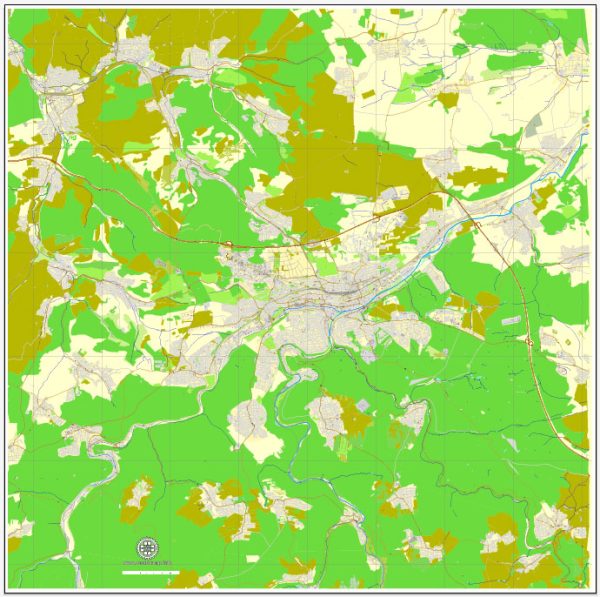Pforzheim, located in the state of Baden-Württemberg in southwestern Germany, has a rich history dating back over 2,000 years. The city’s urban development has been shaped by various historical events, economic factors, and cultural influences.
- Roman Era: Pforzheim’s history can be traced back to Roman times when it was known as “Portus.” The Romans established a settlement here due to its strategic location at the confluence of three major rivers: Enz, Nagold, and Würm. The city became an important trading center and a hub for transportation.
- Medieval Period: In the medieval period, Pforzheim continued to thrive as a market town and gained prominence for its jewelry and watchmaking industry. The city was granted its town charter in 1207, further solidifying its status.
- Destruction in World War II: One of the most significant events in Pforzheim’s history was the bombing raids during World War II. On the night of February 23, 1945, the city was heavily bombed by the Allied forces, resulting in extensive damage. The historic city center was almost entirely destroyed, and thousands of lives were lost. The post-war reconstruction efforts were extensive and aimed at rebuilding the city in a modern and functional way.
- Post-War Reconstruction: After the war, Pforzheim underwent a comprehensive reconstruction process. The city’s layout was redesigned, and modern buildings replaced much of the historic architecture that was lost. This period marked a significant shift in the city’s urban planning and architecture.
- Economic Development: Pforzheim has historically been known for its jewelry and watchmaking industry, and this tradition continues to shape the city’s identity. The Goldstadt (Gold City) nickname reflects its historical and ongoing association with the jewelry trade.
- Cultural and Educational Hub: Pforzheim has also developed into a cultural and educational hub. The Hochschule Pforzheim University, founded in 1877, is known for its focus on design, engineering, business, and social sciences.
- Contemporary Urban Landscape: Today, Pforzheim is a blend of historic and modern architecture. While some historic buildings have been preserved and reconstructed, the cityscape is also characterized by contemporary structures. The city continues to evolve, adapting to economic and social changes while preserving elements of its rich history.
Pforzheim’s history is a testament to its resilience and ability to adapt to changing circumstances. The scars of World War II are still visible, but the city has emerged as a vibrant and dynamic urban center in the modern era.


 Author: Kirill Shrayber, Ph.D.
Author: Kirill Shrayber, Ph.D.